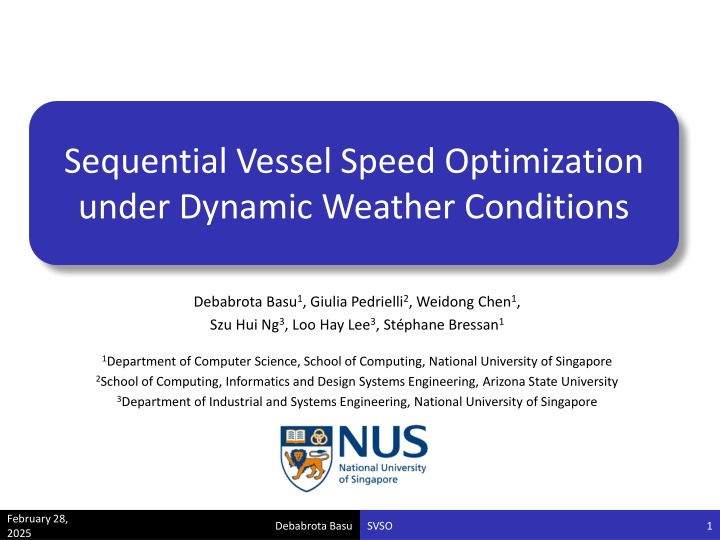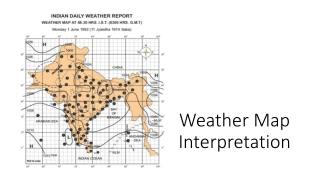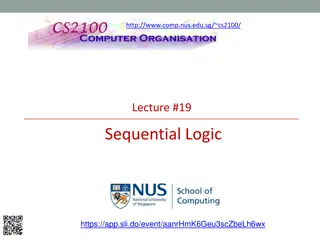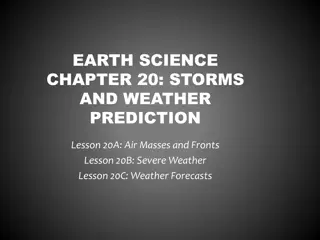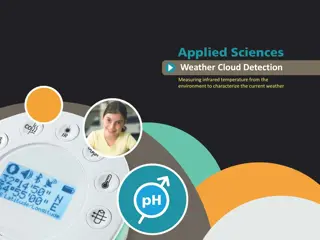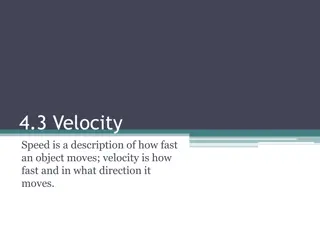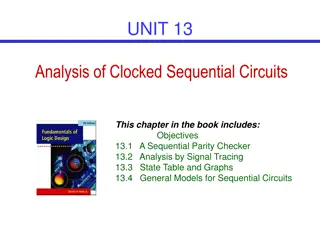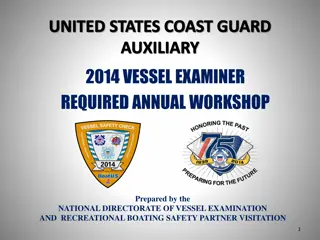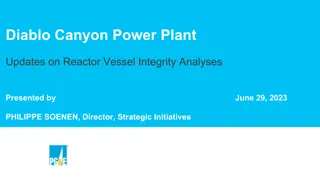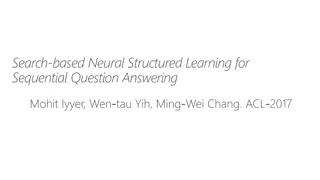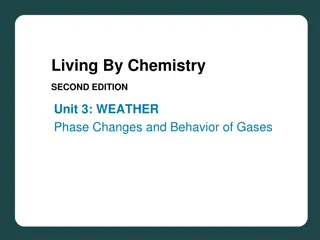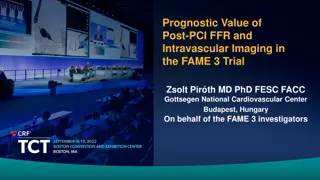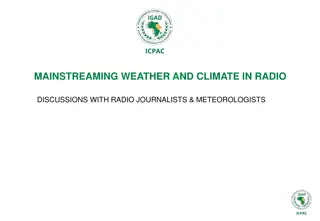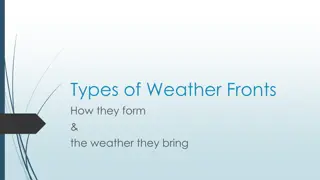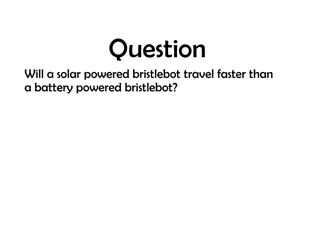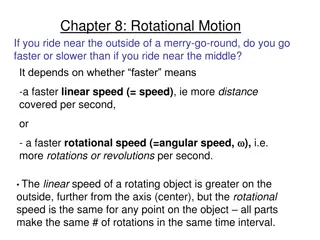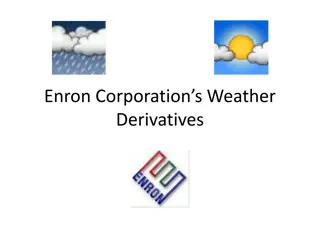Sequential Vessel Speed Optimization under Dynamic Weather Conditions
Automated ships and reinforcement learning are used to address fixed-track weather routing problems, providing a solution through experimental analysis. Learn how to automate for varying weather and extreme events, adapt to changes, and predict future weather conditions using reinforcement learning techniques.
Download Presentation

Please find below an Image/Link to download the presentation.
The content on the website is provided AS IS for your information and personal use only. It may not be sold, licensed, or shared on other websites without obtaining consent from the author.If you encounter any issues during the download, it is possible that the publisher has removed the file from their server.
You are allowed to download the files provided on this website for personal or commercial use, subject to the condition that they are used lawfully. All files are the property of their respective owners.
The content on the website is provided AS IS for your information and personal use only. It may not be sold, licensed, or shared on other websites without obtaining consent from the author.
E N D
Presentation Transcript
Sequential Vessel Speed Optimization under Dynamic Weather Conditions Debabrota Basu1, Giulia Pedrielli2, Weidong Chen1, Szu Hui Ng3, Loo Hay Lee3, St phane Bressan1 1Department of Computer Science, School of Computing, National University of Singapore 2School of Computing, Informatics and Design Systems Engineering, Arizona State University 3Department of Industrial and Systems Engineering, National University of Singapore February 28, 2025 Debabrota Basu SVSO 1
Overview Automated ships and Reinforcement learning Fixed track weather routing problem Solution and experimental analysis February 28, 2025 Debabrota Basu SVSO 2
The age of automation February 28, 2025 Debabrota Basu SVSO 3
Automating the waters a) Rolls-Royce b) Fjord1 Source: http://spectrum.ieee.org/transportation/marine/forget-autonomous-cars-autonomous-ships-are-almost-here February 28, 2025 Debabrota Basu SVSO 4
How to automate for varying weather and extreme events? How to adapt with the changes? How to predict the changes? Reinforcement Learning February 28, 2025 Debabrota Basu SVSO 5
What is Reinforcement Learning? Reinforcement learning is about an agent learning from its environment through interactions. Reinforcement learning is like the new kid in town !!! February 28, 2025 Debabrota Basu SVSO 6
Our Focus How to automate for varying weather and extreme events? How to adapt with the changes? How to predict the changes? Reinforcement Learning February 28, 2025 Debabrota Basu SVSO 7
port i ( ( , ), ) x t v dt + Final Cost = (Bunker price) Penalty(arrival time) F i ports ports port( 1) i Port 3 Arrival window: [t3, t3 ] Port 2 Arrival window: [t2, t2 ] Weather condition ( , ) x t Bunker consumption rate ?(?,?) port i Cost = (Bunker price) ( , ) F t v dt i ports port( 1) i port i + Penalized Cost = (Bunker price) ( , ) F t v dt Penalty(arrival time) i ports ports Port 1 port( 1) i February 28, 2025 Debabrota Basu SVSO 8
Fixed track weather routing problem Find the optimal velocity profile that minimizes the final cost of voyage. * v port i ( ( , ), ) x t v dt + Final Cost = (Bunker price) Penalty(arrival time) F i ports ports port( 1) i ( , ) x t Assumption: The time and space variation of weather is known. February 28, 2025 Debabrota Basu SVSO 9
Solution Step 1: Discretise time and space. Eureka!!! Step 2: Observe that the optimal velocity profile transforms from one space-time rectangle to the other smoothly. Derive boundary values using Weierstrass-Erdmann condition. Step 3: Find out the optimal profile in each cell such that each of them satisfies the derived boundary values. Principles of dynamic programming dictates: Collection of these piecewise optimal velocity profiles is the answer. February 28, 2025 Debabrota Basu SVSO 10
Experimental Set-up 4 ports at distance of 1000 nm and different arrival schedules. Bunker consumption rate as a resultant of consumption due to power generation by the engine and auxiliary engine load. 3 Empirically, F(v) 0.0006 v + 0.2291v + 2.3294. Weather condition is modelled by the effective wave height and the wave direction. The penalty for violating the arrival window = time consumed outside window penalty for per hour per tons of bunker. February 28, 2025 Debabrota Basu SVSO 11
Weather set-up ) Experimental realization of ?(?,? a) Wave height b) Wave direction February 28, 2025 Debabrota Basu SVSO 12
Results and analysis Competing method: Solving the initial value problem (IVP) induced by Euler-Lagrange equation of motion of the ship. Computation time (s) Proposed method IVP Mean 0.0197 0.5298 Standard deviation 0.0062 0.1071 Observations: The proposed method is faster. 1. The proposed method is more stable. 2. Brute force computation of differentials of weather with space and time in IVP is expensive and introduces error in computation. 3. The proposed method does not need such computation and is incremental. February 28, 2025 Debabrota Basu SVSO 13
Conclusion What did we do? We model the fixed track weather routing problem with known weather conditions as an optimisation problem. We design and evaluate a dynamic programming algorithm. The proposed method is faster and stable than the state-of-art method. What can be done? Extend the weather model to consider uncertainty in the prediction. Extend this algorithm using the dynamic tools of reinforcement leaning to solve the general question of automation. February 28, 2025 Debabrota Basu SVSO 14
Thank you. February 28, 2025 Debabrota Basu SVSO 15
